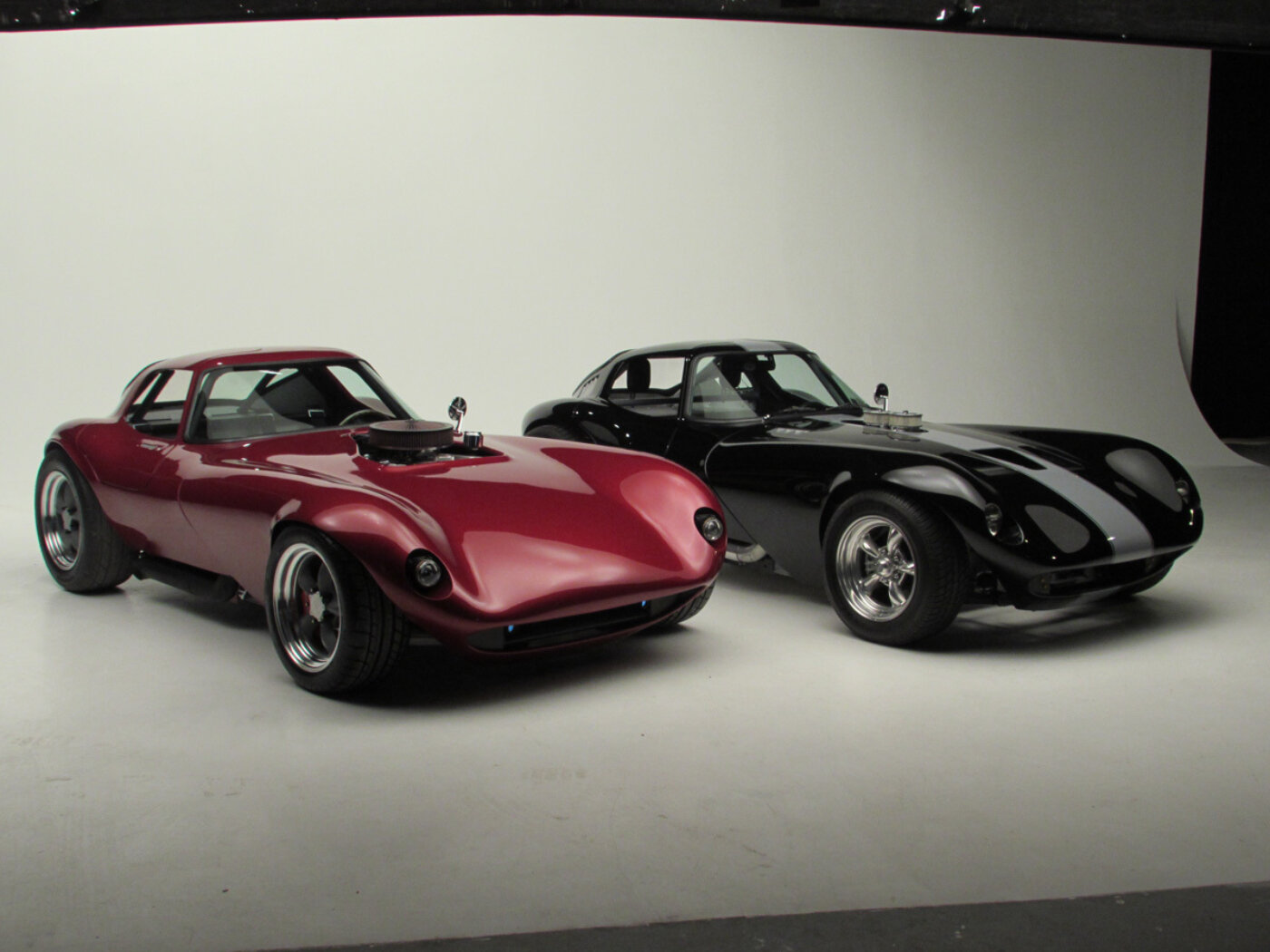
The inception and development of Cheetah Evolution
As Told by Craig Ruth, Ruth Corvette
Most people, when asked, have no idea what the Cheetah from Bill Thomas was, and know little about the man himself either. But mention the Cobra and people start jumping up and down and can recognize that car in an instant.
Bill Thomas was performance builder in the 1960s, what now would be called a tuner. He tried, and succeeded in squeezing out extra horsepower from Chevrolet’s small blocks. When the Rochester FI units appeared he made a name for himself as the “dual air meter” guy.
Basically, he removed the top of the plenum and moved the air meter to the top of the unit to draw the air downward, and doubled up the throttle bodies, creating the first tunnel-ram style induction system.
In 1963 when the new Split Window Corvette was introduced, the Cobras debuted at the same time. Up until then, Corvettes had been dominating sports car racing, but clearly a new, lighter Corvette would be needed to stay competitive, which prompted development of the Grand Sport, along with the Cheetah. But the Cheetah was more of a secret program. With Bill’s contacts on the NASCAR side of Chevrolet Racing, he wanted to try his hands at beating the Cobra by using some Corvette parts.
Bill sat down with Don Edmunds and sketched out a frame design on the floor of the shop and started throwing Corvette driveline pieces at it and rounded out the package with the 327 FI unit. But it had its own suspension with coil-over shocks at all four corners, instead of transverse leaf springs. A swooping fiberglass body covered it all.
The style was unique: gull-wing doors, tilt front end. Bill tried to get GM’s attention but it was at that point that they pulled out of competitive racing so he only manufactured nine cars before getting back into the everyday shop work—building engines and speed parts. The entire project only lasted 11 months. But its impact would continue for decades.
So, fast-forward to 2005 where in Cleveland, Ohio a father and son were busy repairing and restoring vintage Corvettes on a daily basis. The father, Bob Ruth started Ruth Corvette in 1958 while launching his own SCCA career with a FI Corvette. The son, Craig Ruth, had just “retired” from corporate America as a mechanical engineer to start design and building custom cars. They launched Ruth Engineering & Racing, Inc. to provide custom tube frames to vintage Corvettes. While that business was growing, Craig was looking for a new, unique project that would use both the engineering skills and over 50 years of Corvette knowledge.
In 2006 we started the ground work for a round tube chassis to accept the GM/Alcoa suspension components that we were using on the Corvette tube chassis, and laying out a body that resembled the Cheetah from the Sixties. From the beginning we knew we wanted a 90-inch wheelbase to reflect what Thomas had done. Our track got a little wider to allow for larger, modern wheels and tires, which in turn would allow for bigger brakes.
We built chassis around the suspension and a small block Chevy with a 5-speed Tremec. Next we built the fixture to duplicate the frame. Then the difficult part of building a wooden buck over the chassis to replicate the Cheetah features began.
However, we wanted a more aggressive, lower stance, so we made the Cheetah Evolution wider, taller in the roofline, and lower to the ground. We also designed ‘A’ pillars at the windshield to add strength. The doors also got a pillar to add stability while in the open position. The front windshield is DOT laminated glass that we contracted with Guardian Glass to manufacture.
This original car became known as the Mule. We attended several shows in the Midwest even before the car was ready. The original marketing plan was as a kit car, but we still didn’t know who our customers were going to be. It wasn’t until March of 2008 that the Mule was complete and then it took until June of that year for it to be licensed and titled in Ohio. The whole time we advertised and attended shows, to no avail, it took until 2009 before we sold our first body and frame package.
For those of you who remember, the Mule became known as Margarita because of her Lime Gold PPG Hot Wheels paint. That car was everywhere, and photographed continuously, but it didn’t help us sell cars. And we couldn’t even sell her!
It wasn’t until 2012 that we sold that car to its current owner, who saw it in 2008 right after it was titled, and remembered the car from a show in Pennsylvania. He remembered because I took him for a short ride.
The sale of Margarita was bittersweet, because it was tough to get rid of the first car we ever built, but that allowed us to concentrate on producing more cars and make improvements.
In the years between 2005 and 2008 we converted all the hand sketches and patterns to CAD using Solidworks. We also added bending software to our growing list of manufacturing tools to allow us to streamline the builds. We still use the base of our original chassis jig, but the rest has been through multiple renditions.
As we progressed through the builds we modified or added to the chassis. We changed materials for certain suspension components. We found a new supplier for the lay-up of the bodies. Tooling was built to create side windows because the market dictated that we have AC systems. Wipers were always a stock item but we added a washer system.
The location and the type of pedal assemblies also changed over the years. We now manufacture a conversion to take our vendors pedal assembly to mount a drive-by-wire GM throttle for all of the LS builds that we do. Again, the market drives the product.
The gull-wing door function was always an issue. We felt we needed to keep it because it was recognizable as a Cheetah feature. We tried several ideas, even a simple component like the Thomas car. In the end we manufactured CNC aluminum units with bronze bushings. But we went further still. By using SS ball-bearing push pins, we could make the doors come off easily to allow the car to be driven as a Targa top.
Once we added air conditioning and the side windows, which we made removable, it occurred to us that having lockable door latches which could be operated from both sides of the door was the next logical step. We incorporated aircraft flush-mount billet latches that are used in the EAA community. Once the manufacturer saw what we were doing, we volunteered to make a custom handle for the Cheetah Evolution. We are now developing a more reliable latch system in the front and rear of the doors.
Because of the size and configuration of the Cheetah Evolution, it was necessary to design and build our own components in several areas, such as the fuel tank and the radiator. Our radiators are a crossflow design to get more cooling from a smaller area. The necks have bends to clear the tubing of the chassis. Also, the fuel tanks are built to follow the shape of the chassis and to allow for the highest volume. The tanks can feed traditional engines or be fitted with in-tank pumps for the new EFI engines.
In 2013, we met Bill Thomas III, son of the original creator of the Cheetah, and became fast friends. Over the years as Bill has seen our company grow and our Cheetah evolve, he always reminds us that this is the path his dad would have taken had he not stopped building cars. The natural progression to have the car become a daily driver makes sense. Bill has taken on the role as the cheerleader of all things Cheetah. We are building a community of like-minded people that just want to have fun, no matter what kind of Cheetah they have. We have played a huge part in introducing fans to Bill.
At one event that we organized as a team, we met Dave Kennedy from Carrera Slotcars and became immediate friends. It was through Dave from another event he hosted that Stacey David became aware of our Cheetah Evolution. As it happens with most fans, he loved the old Cox and Aurora slotcars that emulated the Cheetah. Dave put him in touch with us and we agreed, along with our vendors, to provide Stacey and his show Gearz with a “body-in-white” package of our Cheetah Evolution. To date we have been on five episodes of his show. He continues his build and we try and update our fans on our web page.
So in the 11 years that we have been building the Cheetah Evolution we learned several things. First, a project is never finished. There is always room for improvement.
Second, finding your demographic is difficult. It took us years. We found it in the aircraft industry. Owners and builders that have come from the airlines or aerospace industry understand difficult tasks and like to take risks. These guys don’t need a manual to tell them were to put a pop rivet. They like unique, and they are going to build it their way.
Lastly, you can’t sell to everyone and you can’t change your product to make the sale. In the beginning, we tried to accommodate everyone who wanted a Cheetah. But we found that changing our manufacturing to fit in the budget of everyone that wanted one was not going to make for a good product. So we changed our program to appeal to a higher-end market. By using the best components, you can’t lower your price but you can give that client the most unique automobile in the industry.
As for the two Cheetahs shown here, the black one has a 456hp, 383 Chevy backed by a Muncie M20 and a Dana with a 3.55 ratio. The body features a vintage race car hood and body louvers.
The burgundy car, named Rosalita, this is the first big-block Chevy we put into a customer’s Cheetah Evolution. He wanted old school so he chose the ZL1 clone—a 500hp, all-aluminum 427 crate engine from Chevy with a Tremec 6-speed manual trans. The rearend is a Dana 44 with a 4.11 ratio. Lots of detailing as well, too many items to list here.
We’re also offering a Winters center section (non quick-change version) for the rearend with a massive 10-inch ring gear. That’s because customers want to run crazy horsepower, 700hp and up! Just like Bill Thomas would’ve wanted as well.

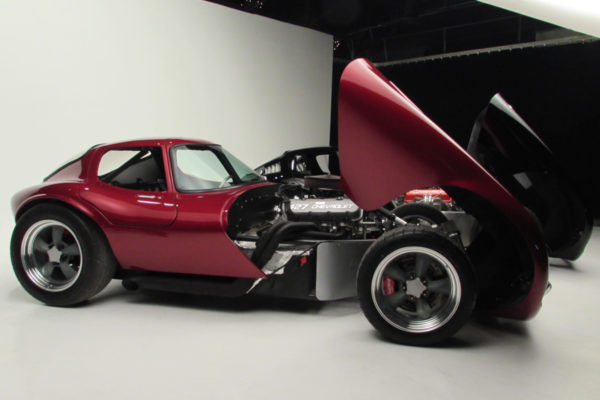
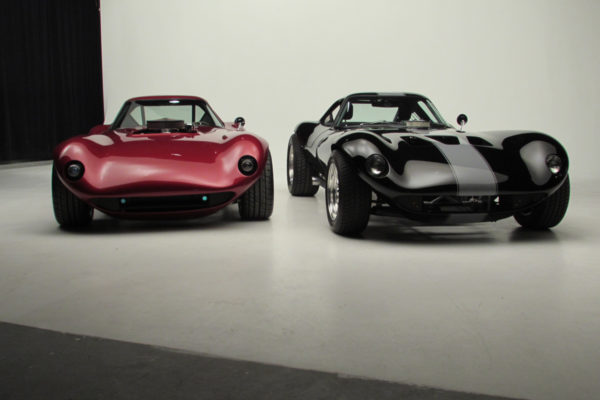
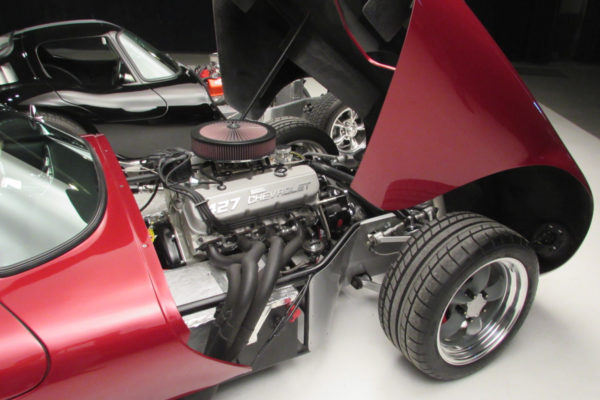
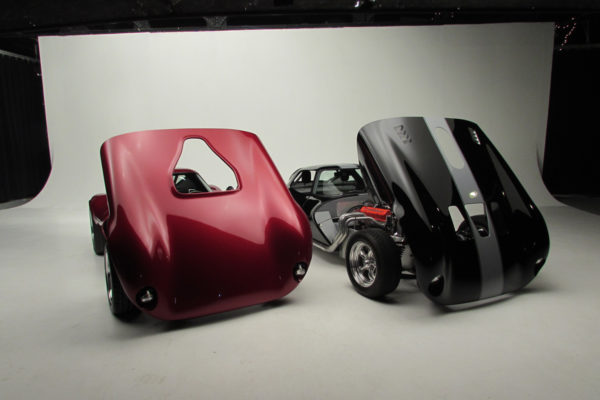
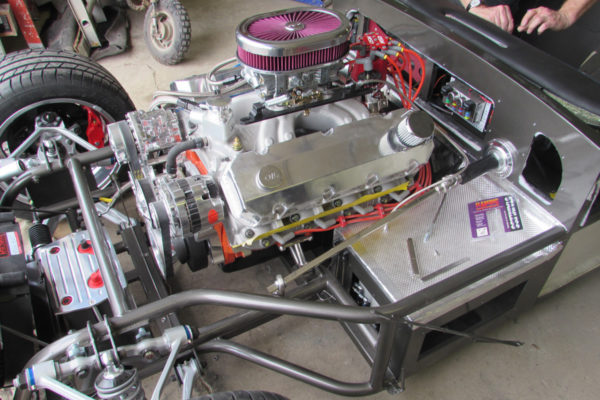
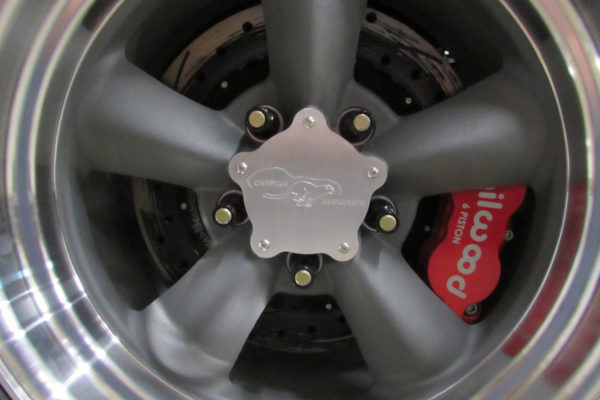
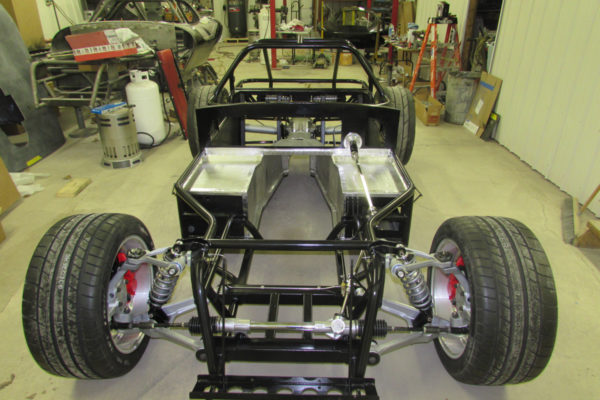
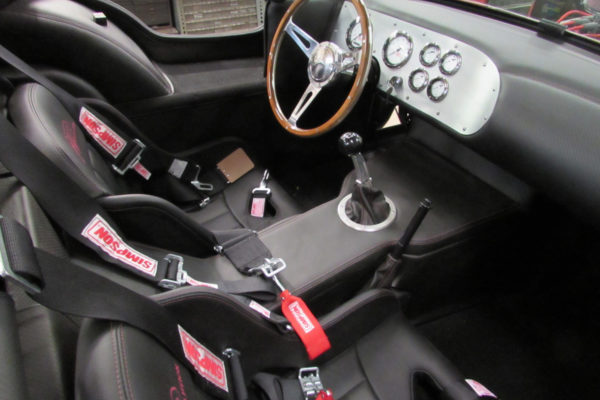
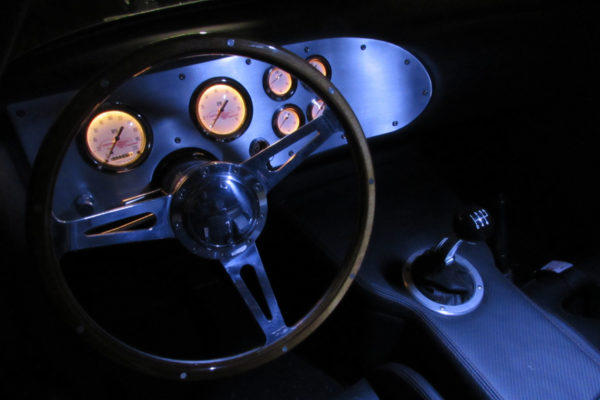
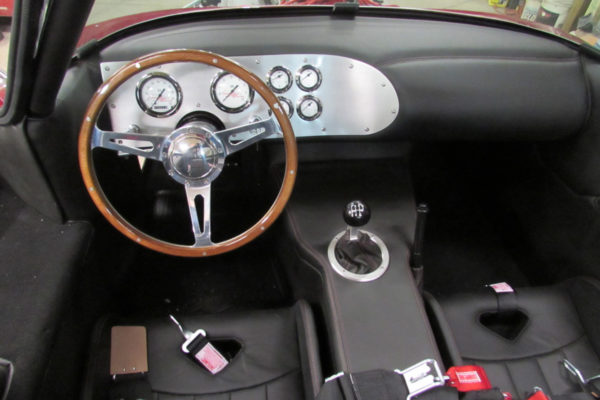
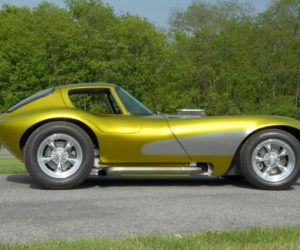
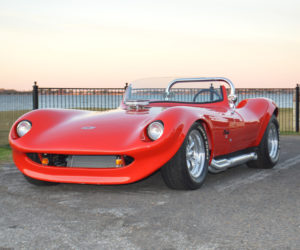
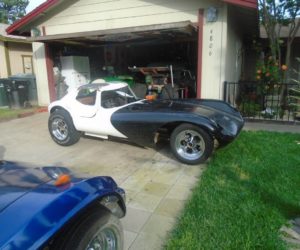
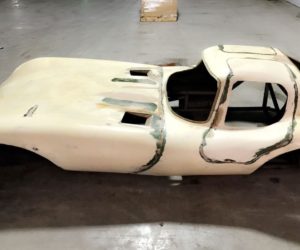
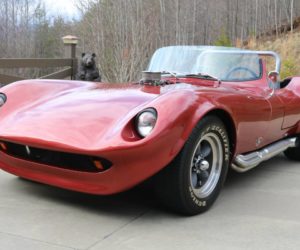
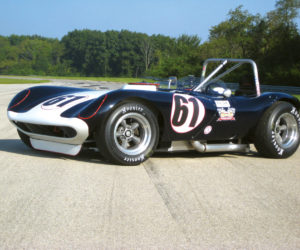




Comments for: CHEETAH EVOLUTION
comments powered by Disqus